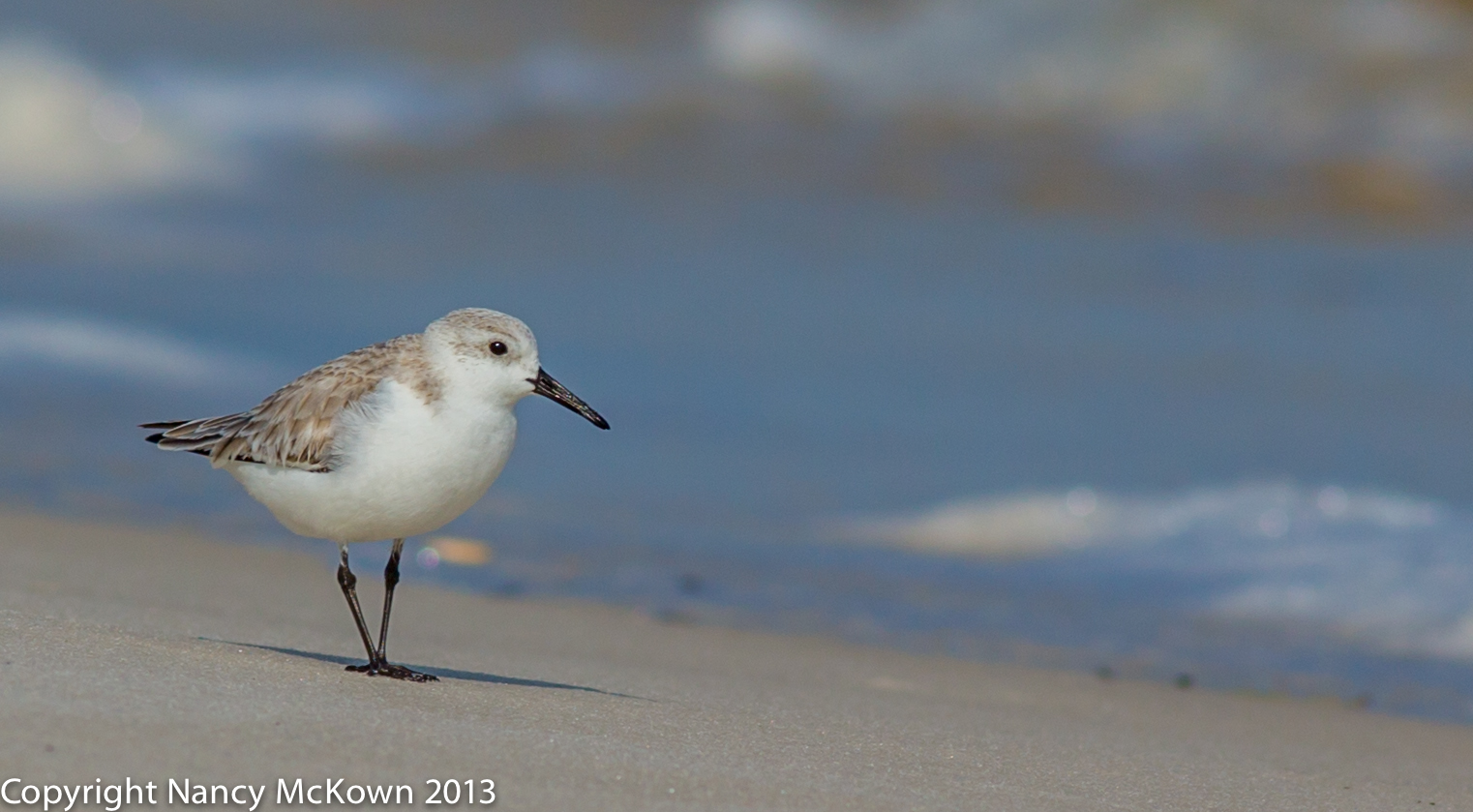Shore Bird Beauty
I love to photograph the sandpipers on the beach. Beautiful, subtle colors of the birds’ feathers complement the warm tones reflected in the sand and water. I usually sit down on the sand at bird level and secure my camera on a miniature tripod that is height adjustable, able to handle long lenses and manage the sandy terrain. Sometimes I cheat and bring a low stool with me. This makes it easier to get up and follow the birds quickly.
You’ll find different sorts of sandpipers skittering about on almost all beaches, poking around for invertebrates buried in the sand. Along with seagulls, they are an integral part of the beach scape. They blend. Even their nests (a slight depression in the sand) don’t stand out.
Sandpipers don’t seem especially wary of photographers, which helps when you are down in the sand with them. That lack of anxiety is a blessing to bird photographers because it gives us time to pause and think before we shoot. Quite a luxury in the world of bird photography.

ISO 200, f/7.1, 1/1600 second
The Luxury of Time
So you have the luxury of time when photographing sandpipers on the beach. Why not take this time to think about how best to improve your photography by learning more about how you can better manage your camera’s automatic exposure system.
Exposure Compensation Dial for Natural Light
Beaches are full of sand, sky and water, very reflective and very bright. The auto exposure metering system on your camera has all sorts of algorithms to do the math and figure out what exposure is proper for the scene. Since conditions on the beach are not average, the little computer that calculates the camera’s auto exposure can set the wrong exposure for the scene.
That’s why most digital cameras allow photographers to over ride the camera’s settings with an “exposure compensation” dial. When you play with the exposure compensation dial on your camera, you are essentially changing the camera’s “optimal” exposure reading.
How do you Know When to Adjust the Camera’s Auto Exposure Reading?

ISO 200; f/6.3; 1/1600 second
Use the Camera’s Histogram
All digital DSLR’s have a display called the histogram. A histogram is a graph showing the brightness levels of the pixels for every image the camera takes. The graph runs from left to right and shows values from 0 (black/dark) to 255 (white/bright). Mid tone pixels are in the middle.
The fastest, most reliable way to determine if you need to adjust exposure while photographing on the beach is to follow this simple formula.
Simple Formula to Adjust Exposure on the Beach
1) Find the Exposure Compensation Dial on your camera. (There should be 2 dials, one for adjusting light for your flash and one for adjusting natural light.) Make sure the Exposure Compensation dial for natural light is set in the center, on 0 or null. With this setting, the photographer is relying on the camera to determine the correct exposure.
2) Take a quick test photograph of your subject.
3) Check the histogram’s RIGHTMOST data for the photograph. (For this test, no need to check the data on the left side of the histogram.)
- If the display is touching the right edge of the histogram, the exposure should be fine.
- If the data is not quite to the right edge of the histogram, just add exposure by moving the dial a little to the right. (on the “+” side)
- If the data is crawling way over the right edge of the histogram (clipping) that means that there’s WAY TOO MUCH LIGHT. This is very bad. Lost details means lost forever. No post processing software can bring back those over exposed details. Simple solution: Move the dial one stop to the left, or subtract exposure. (on the “-” side).
- Take another test photograph and recheck your histogram. Keep making adjustments until the RIGHTMOST data is just touching the right edge of the histogram.
All it takes is a quick look at the histogram. It will give you much more accurate information than just checking the display on the back of your camera.
One Last Thing
The beach is a pleasant place to photograph and the shore birds are generally patient and cooperative. However, cameras and sand (especially blowing sand) are not a good mix, so take some precautions to minimize contact. And be sure to bring your camera bag for when you are not using the camera.









